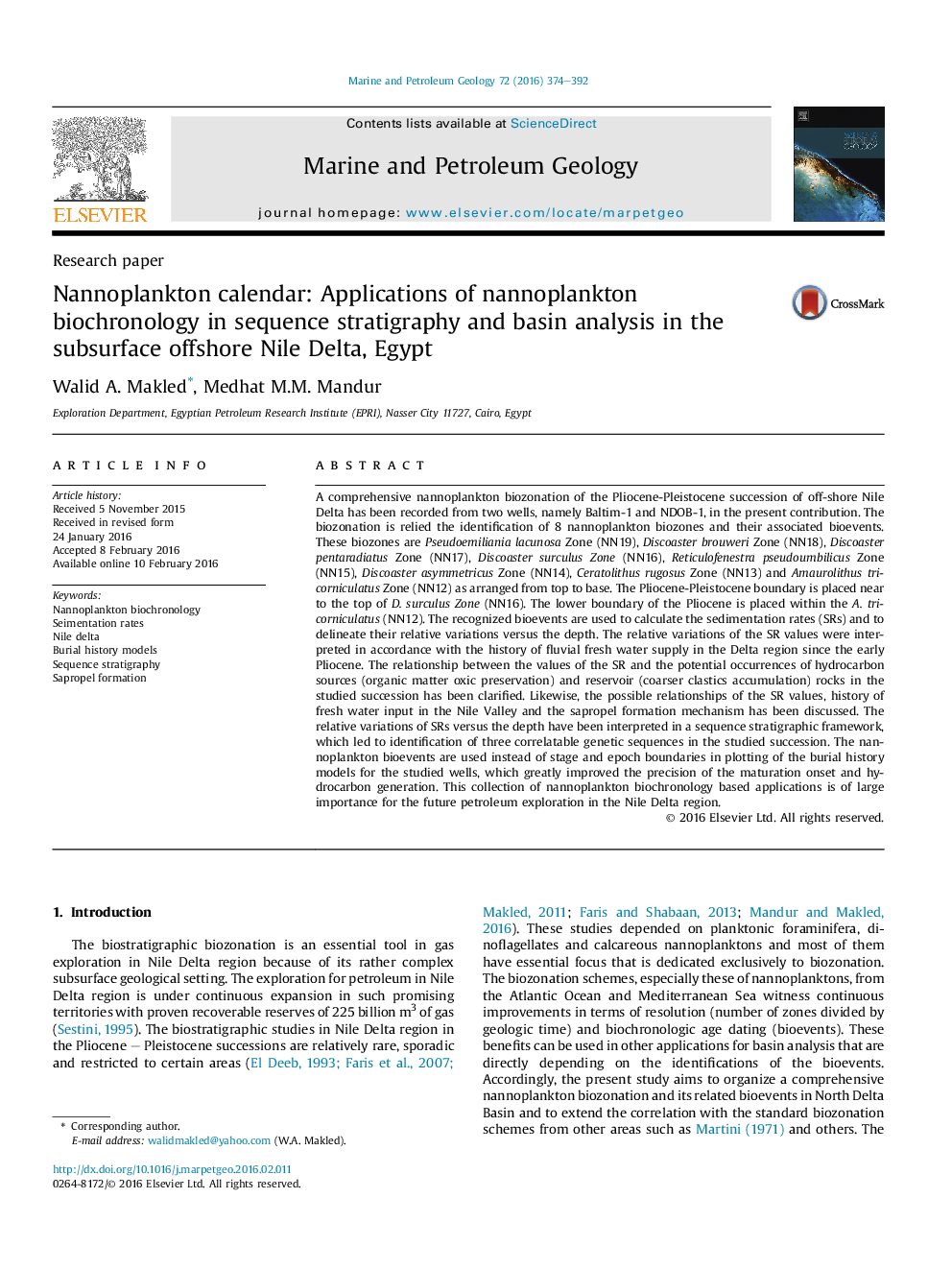| Article ID | Journal | Published Year | Pages | File Type |
|---|---|---|---|---|
| 6434510 | Marine and Petroleum Geology | 2016 | 19 Pages |
â¢The nannoplankton biostratigraphy was studied through Pliocene-Pleistocene sediments from off shore Nile Delta.â¢Eight biozones were identified along with their associated bioevents from NDOB-1 and Baltim-1 wells.â¢The identified bioevents were used to calculate the sedimentation rates (SRs) through the studied sections.â¢The SRs delineated sequence stratigraphy, fluvial activity, and persistence of petroleum source and reservoir rocks.â¢The identified bioevents are used to construct more accurate burial history models.
A comprehensive nannoplankton biozonation of the Pliocene-Pleistocene succession of off-shore Nile Delta has been recorded from two wells, namely Baltim-1 and NDOB-1, in the present contribution. The biozonation is relied the identification of 8 nannoplankton biozones and their associated bioevents. These biozones are Pseudoemiliania lacunosa Zone (NN19), Discoaster brouweri Zone (NN18), Discoaster pentaradiatus Zone (NN17), Discoaster surculus Zone (NN16), Reticulofenestra pseudoumbilicus Zone (NN15), Discoaster asymmetricus Zone (NN14), Ceratolithus rugosus Zone (NN13) and Amaurolithus tricorniculatus Zone (NN12) as arranged from top to base. The Pliocene-Pleistocene boundary is placed near to the top of D. surculus Zone (NN16). The lower boundary of the Pliocene is placed within the A. tricorniculatus (NN12). The recognized bioevents are used to calculate the sedimentation rates (SRs) and to delineate their relative variations versus the depth. The relative variations of the SR values were interpreted in accordance with the history of fluvial fresh water supply in the Delta region since the early Pliocene. The relationship between the values of the SR and the potential occurrences of hydrocarbon sources (organic matter oxic preservation) and reservoir (coarser clastics accumulation) rocks in the studied succession has been clarified. Likewise, the possible relationships of the SR values, history of fresh water input in the Nile Valley and the sapropel formation mechanism has been discussed. The relative variations of SRs versus the depth have been interpreted in a sequence stratigraphic framework, which led to identification of three correlatable genetic sequences in the studied succession. The nannoplankton bioevents are used instead of stage and epoch boundaries in plotting of the burial history models for the studied wells, which greatly improved the precision of the maturation onset and hydrocarbon generation. This collection of nannoplankton biochronology based applications is of large importance for the future petroleum exploration in the Nile Delta region.
